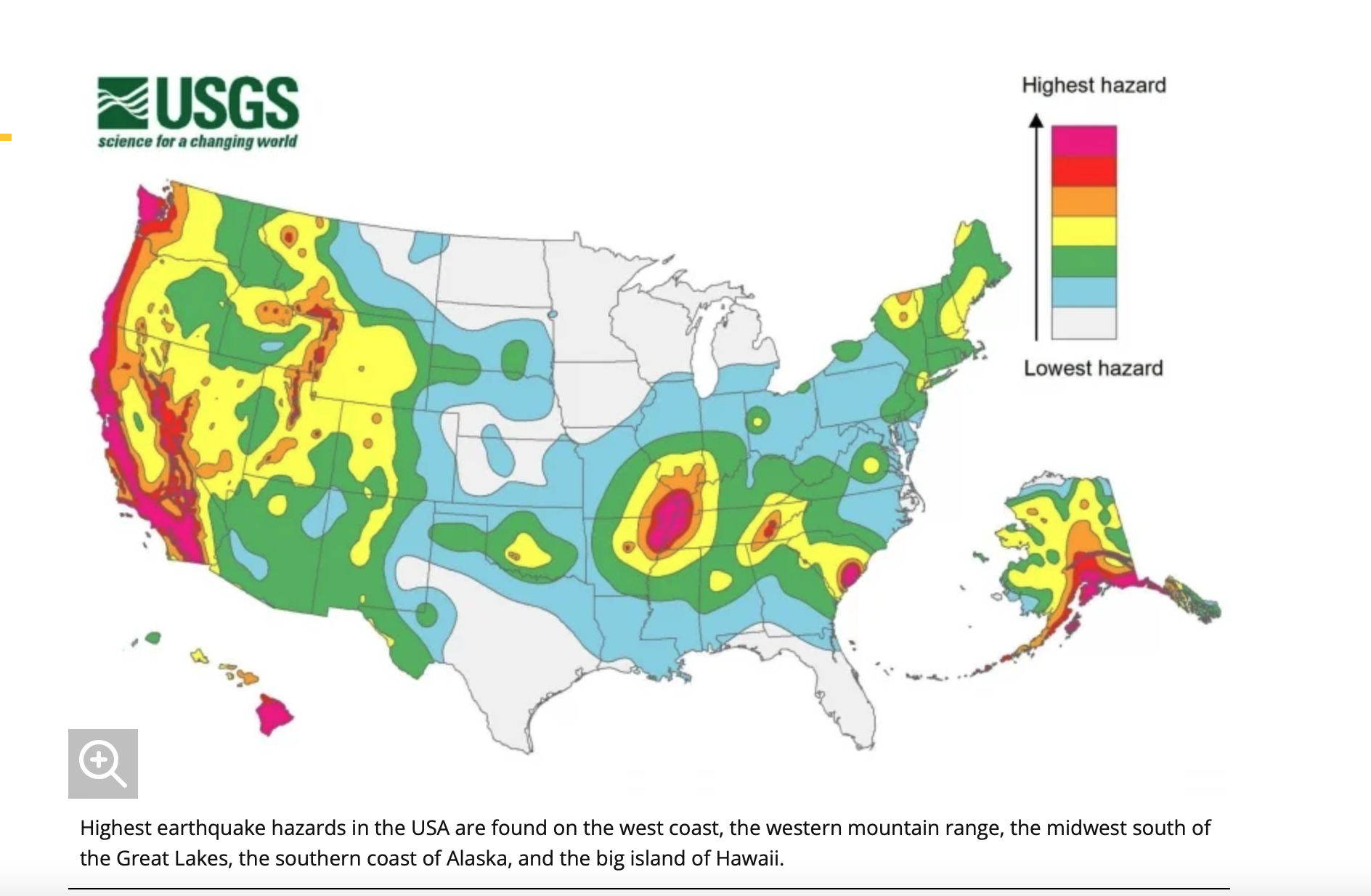By Kevin Lahey, CR and Dan Turpin | Published February 15, 2023
For property owners and managers on the West Coast, having an earthquake-preparedness plan is yesterday’s news. But damaging earthquakes aren’t limited to the West.1 In fact, two of the Top 10 strongest earthquakes ever recorded in the U.S. occurred east of the Rocky Mountains — in New Madrid, Mo., in 1812 and in Charleston, S.C., in 1886.2
Unlike other natural disasters, there is not an earthquake season, and these damaging events occur with zero notice. For building owners and operators in areas that may have earthquakes but aren’t as prone to them as the West, another challenge arises, as only some states east of the Rocky’s have regulated seismic codes on the books.
For example, the majority of the seven Midwestern states in the New Madrid Seismic Zone (NMSZ), have state-wide mandated seismic building codes, including Arkansas, Indiana, Kentucky and Tennessee. The other NMSZ states, including Illinois, Mississippi and Missouri, defer to their local jurisdictions to adopt codes under state guidance instead.
To address these discrepancies, carriers should encourage building owners and operators to perform the following eight precautionary measures to strengthen and secure their buildings well before an earthquake occurs.
- Secure tall furniture and top-heavy items like water heaters to the wall to prevent them from falling over and igniting a fire. Store heavier items as low to the floor as possible, to prevent them from tipping and injuring someone or blocking an exit.
- Bolt the foundation more adequately to withstand an earthquake using approved engineering drawings.
- Install bracing for walls, support columns and floors, particularly to strengthen any non-occupied “soft story” floors, such as parking garages and carports at the lower levels of high-rise buildings or commercial buildings.
Those soft stories are often the first to fail and cause a pancake collapse of the structure, and in areas where earthquake preparation typically doesn’t come into play in construction ordinance and law provisions, they aren’t always properly braced to withstand quakes.
- Retrofit rooftop heating and cooling units to be bolted to the roof truss rather than the roof decking, so that they stay completely attached to the roof structure t. Also consider correct spring-loaded connections to allow them to absorb some of the energy from the shaking of the building rather than snapping from the shear force.
- Store flammable products in a steel container or secured cabinet to prevent them from crashing to the floor, spilling and potentially sparking a fire. If such a container or cabinet is not available, storing them low to the floor may help as well.
- Invest in a seismic alarm and shutoff system, which detects an earthquake as it happens and automatically shuts off utilities (water and gas) to help minimize the risk of a major fire or flood if the earthquake severs supply lines.
Installing a seismic shutoff valve, like other hardware recommendations above, is not as expensive as you might think. They typically run between $250 and $750, including installation labor.[3] At the least, if you cannot install a seismic sensor, locate and ensure access to those shutoff valves if an earthquake happens.
- Assemble an emergency supply kit to include food and water for several days, a first aid kit, flashlights, extra batteries, fire extinguishers and an emergency whistle to sound in the event you’re stuck in a debris pile and need to be rescued. Purchasing an NOAA Weather Radio is recommended as well, since it broadcasts 24-hour weather radio stations throughout the United States. This kit can be used for a variety of potential disasters.
- Ensure any occupants know proper safety protocols to benefit all risk stakeholders. When an earthquake happens, getting outside was traditionally considered the safest approach; but that theory needs to be analyzed in advance before taking action. For those who occupy a high-rise building in a downtown area, for example, occupants who run outside may have broken window glass or crumbling building materials fall on them.
A Reasonable Investment to Lower Risk
Investment in earthquake preparations may seem extraneous or even unnecessary to some property owners east of the Rocky Mountains, but retrofitting or enhancing structural strength will pay dividends when done properly, should an earthquake occur. Regardless of the location, the goal is always for an insured’s property to be one of the buildings still standing post-quake because they prepared.
For more strategies to consider for protecting your facility from potential earthquake damage no matter where you live, reach out to RMC Group today.
This information is intended for informational purposes only. Each restoration project has unique properties and must be evaluated individually by knowledgeable consultants. Additionally, cutting samples of roof assemblies should be performed by qualified professionals and in some instances approved by the roofing manufacturer. RMC Group is not liable for any loss or damage arising out of or in connection with the use of this information.
Sources:
1 Michigan Technological University “Earthquakes in the Midwestern and Eastern United States?!”
2 Verisk AIR Currents “Top 10 Historical Earthquakes in the U.S.: What Would They Cost Today?” October 23, 2017.
3 Angi “How Much Does an Earthquake Valve Cost?” January 11, 2022.


